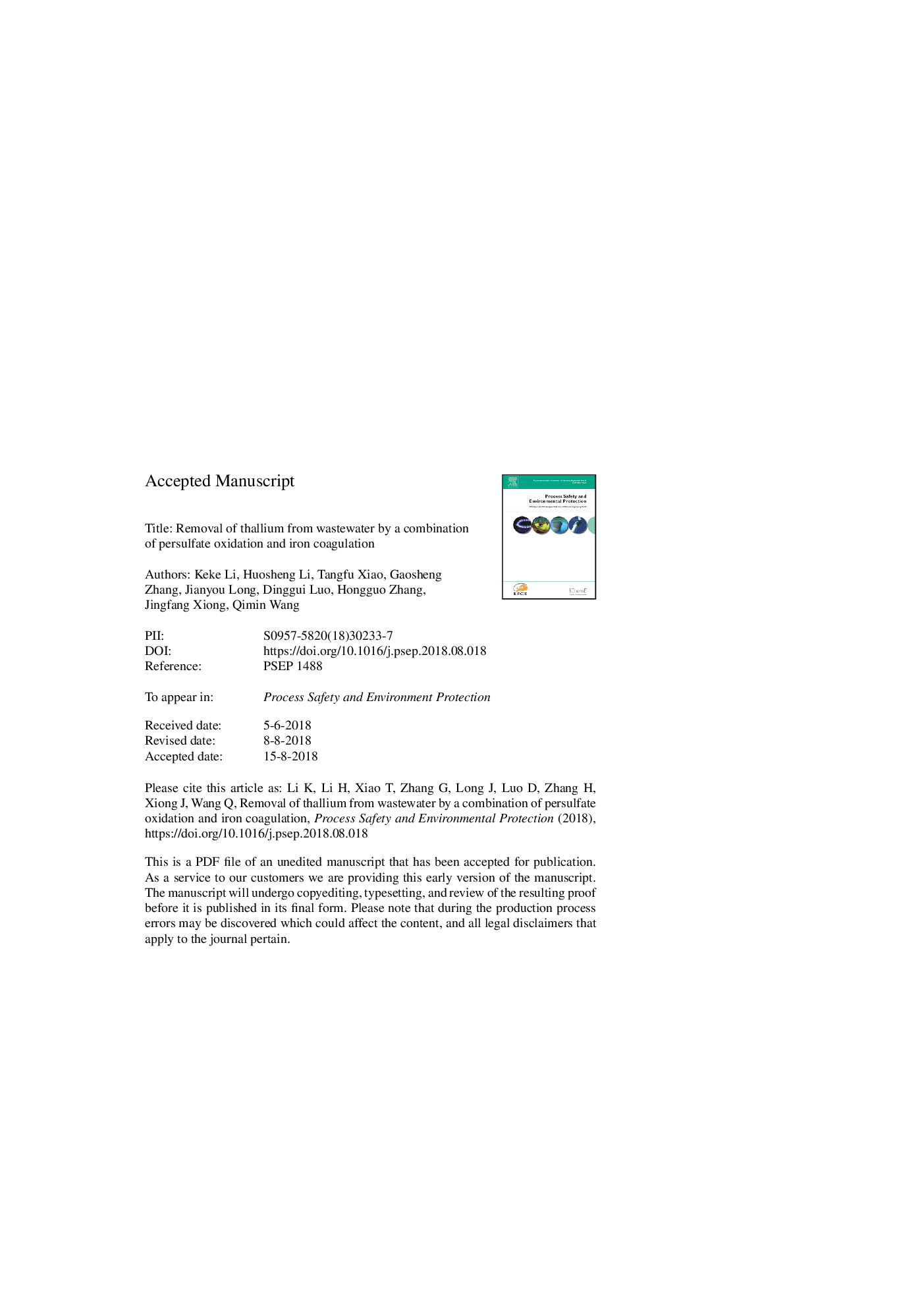| Article ID | Journal | Published Year | Pages | File Type |
|---|---|---|---|---|
| 11003073 | Process Safety and Environmental Protection | 2018 | 30 Pages |
Abstract
Thallium (Tl) removal from wastewater using a ferrous iron-persulfate (Fe2+-S2O82â) Fenton-like system was investigated. Factors influencing Tl removal, namely S2O82â dosage, Fe2+/S2O82 molar ratio, reaction pH, coagulation pH, co-existing metal ions, co-existing organic matter, and initial Tl concentration, were examined. The results show that Tl removal efficiency increased with increasing S2O82â dosage. Effective Tl removal (>96%) was achieved when the Fe2+/S2O82â molar ratio was higher than 1:1. The reaction pH had little effect on Tl removal, while the coagulation pH significantly affected it. Coagulation pH exceeded 10 was favorable to Tl removal (>96%). Tl removal efficiency was reduced by about 30% when the concentration of co-existing organic matter was higher than 100âmmol/L. More than 90% of Tl was removed when the initial Tl concentration increased from 20âμM to 150âμM. Based on the SEM-EDS, XPS and FT-IR spectroscopic analyses, it is concluded that the absorption of colloidal ferric hydroxide and the oxidative precipitation of the Fe2+-S2O82â system are the main mechanisms for the removal of Tl. Given the excellent Tl removal and stable performance, the Fe2+-S2O82â system could be an effective and promising alternative for Tl removal from wastewater.
Related Topics
Physical Sciences and Engineering
Chemical Engineering
Chemical Health and Safety
Authors
Keke Li, Huosheng Li, Tangfu Xiao, Gaosheng Zhang, Jianyou Long, Dinggui Luo, Hongguo Zhang, Jingfang Xiong, Qimin Wang,
